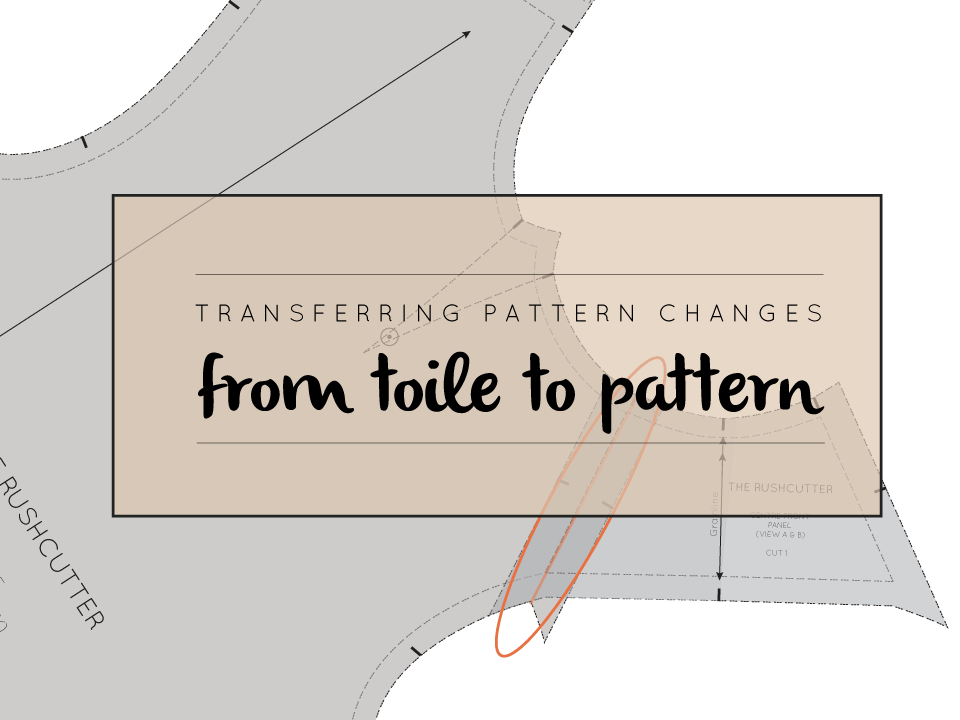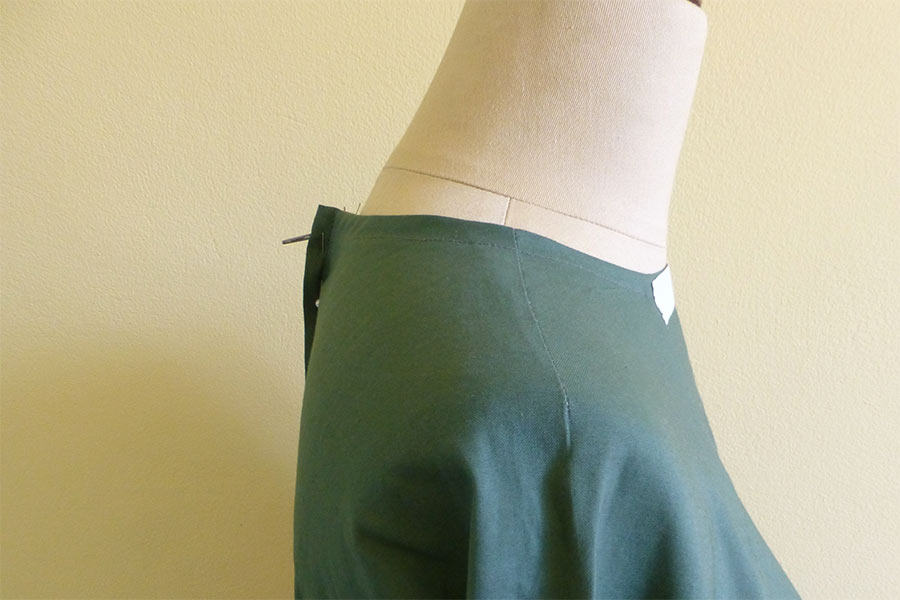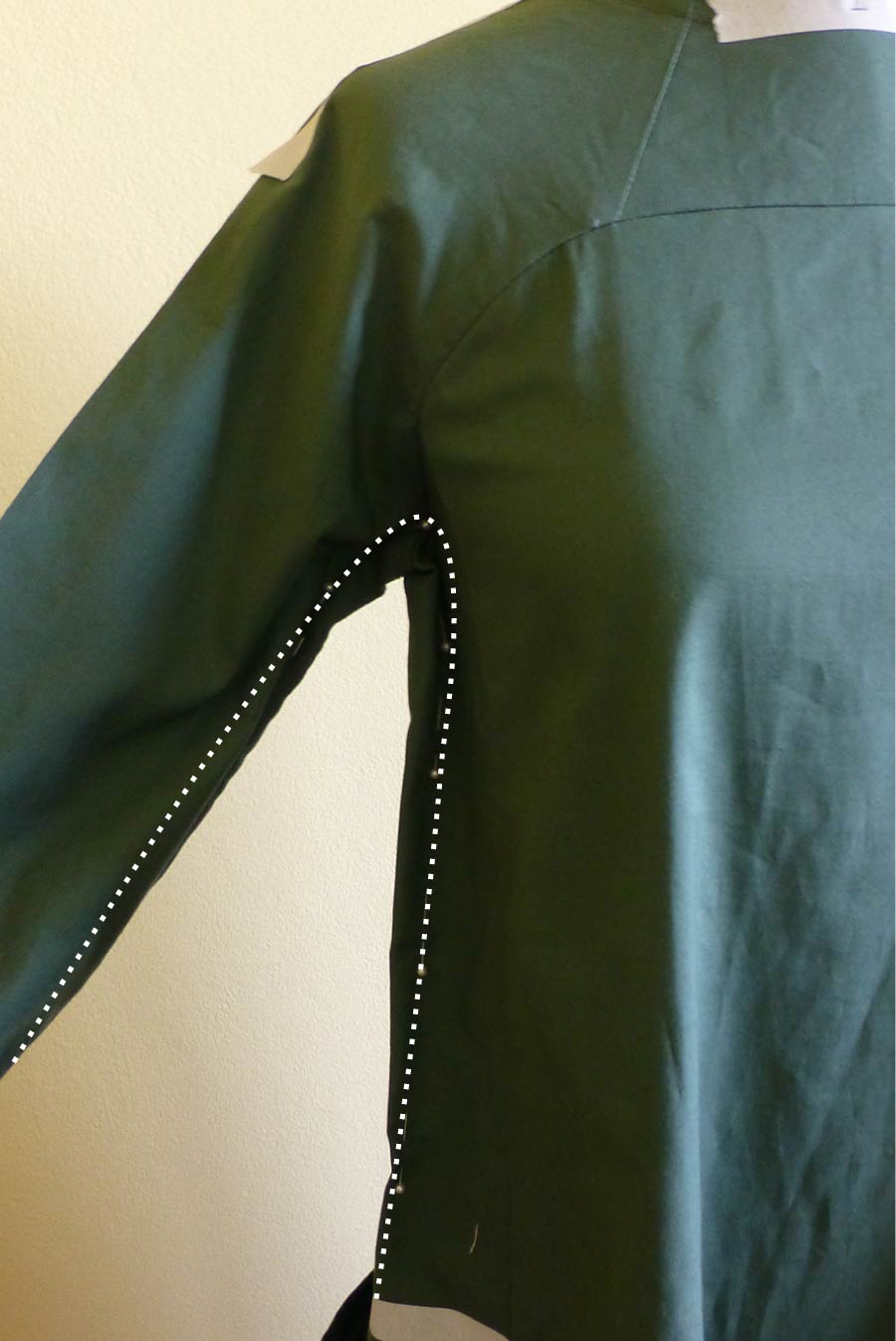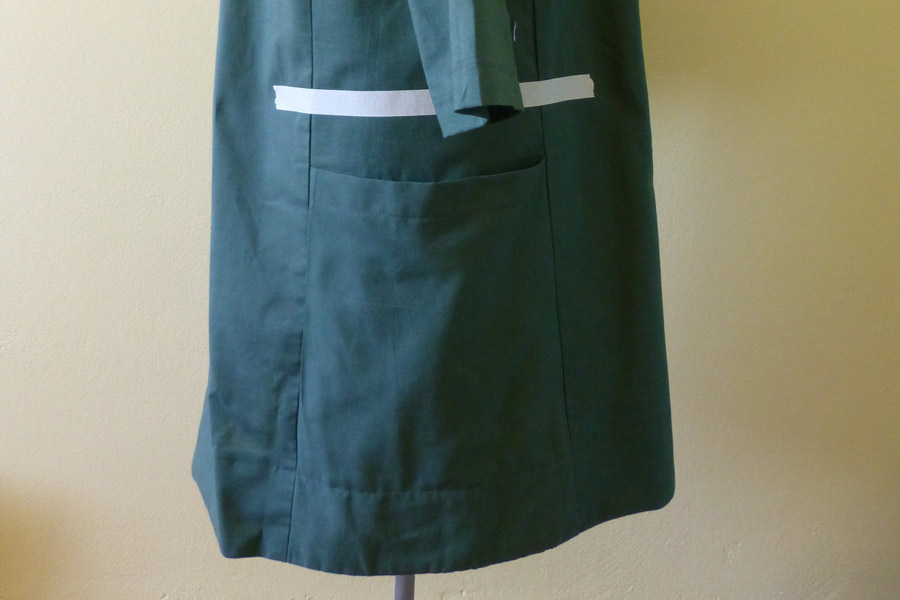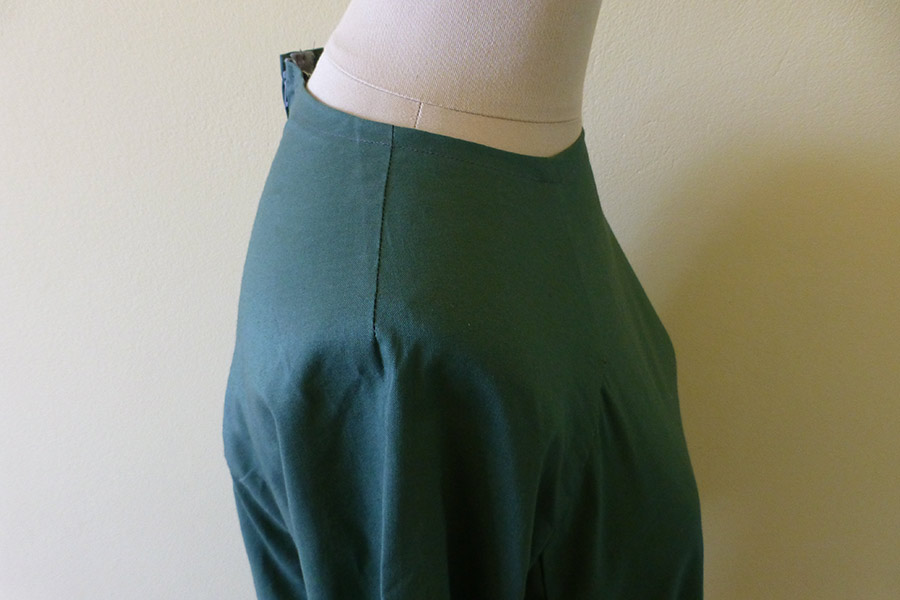Last week I showed you how to make a toile, and what you should be looking for when fitting. In today's post, I will show you how to transfer changes from toile to pattern.
Lowering the neckline
The first change that I will show you is how to lower the neckline of The Rushcutter. I am all about the high neck on this dress, but I understand that it's not for everyone. If you'd prefer it to be slightly lower (or even drastically lower) it's not a difficult alteration to make.
To start, take the sleeve pattern and the centre front panel pattern piece, and put them together. Place one sewing line over the other, so you can see how the pieces fit together when they are sewn. You will notice that on The Rushcutter sewing pattern, both the stitching line and the cutting line are marked, so that making pattern alterations is a little simpler.
Work out how much you would like to lower the neckline by, by taking the measurement from your toile (measuring down the centre front) and mark it on your pattern piece. Make sure you measure it from the stitch line rather than the edge of the pattern. For the example, I only lowered the neckline at the front, but if you would also like to lower the neckline at the back, place a mark on your centre back too.
Before redrawing the neckline, you will need to fold the dart (so you can get the neckline all in one piece). The easiest way to do this is by placing the dart point on the corner of the table like this. The dart fullness should be folded towards the back.
Starting at the point you marked on the centre front, re-draw the neckline with a smooth curve, gradually easing back into the original neckline (unless you are also lowering the neckline at the back, in which case you will want your new neckline to meet with the point you marked on the centre back).
Before unfolding the dart, take a tracing wheel and trace over the new neck curve at the dart. This will transfer the correct neck shaping onto your dart. If you need some extra help with this, check out this tutorial. You will now just need to add seam allowance to the neckline and you are good to go!
Add or remove volume
The next thing I'm going to show you is how to use the cut and spread technique to add or remove volume from The Rushcutter. You may want to use this technique on the body of the dress, or maybe even the sleeve.
If you have never used the method of cutting and spreading before, this example will basically show you how to do it. If you want to see it in more detail, check back on the blog later this week, as I am planning to do a post on this technique.
Pattern alterations are much easier to manage if your pattern does not have seam allowance. Remove the seam allowance from the pattern you are altering, or trace a copy of the pattern piece without seam allowance. This is really easy to do with The Rushcutter pattern as the stitch line is marked for you.
1. Draw two vertical lines through the pattern, which will cut the pattern into three equal-ish parts (this does not have to be exact).
2. Starting with one of the lines, cut up from the hemline towards the top of the pattern. Do not cut all the way through the pattern, leave a 1-2mm "hinge." The hinge will give you the freedom to move the parts of the pattern easily, but will still keep the pieces together. Repeat for the second line.
3. Place the pattern on top of a piece of pattern paper, slightly larger than the pattern piece. Spread the pieces apart, by the desired amount, being careful to distribute the width evenly. When you are happy, tape (or glue) the pieces down carefully.
4. Redraw the hemline with a smooth curve. If the opposite edge has changed shape too drastically you should also re-draw the line.
The method is the same for reducing volume, you just need to close the cut and spread line, rather than open it.
Shortening pattern
There are two ways of shortening a pattern - the first is to simply remove some length from the hem of the pattern. This method is often used when a garment has been made up and then once it can be tried on and fitted, the length is determined.
The other method is to shorten the pattern piece by removing the length from inside the pattern piece. By using this method, the overall shape of the pattern piece will not be lost.
For this method, you first need to find the 'length and shorten line,' on the pattern piece you would like to shorten. I am using the sleeve from The Rushcutter as an example, but this method can be used on any of the pattern pieces.
Cut along the line to create two separate pieces.
Think about how much length you would like to remove from your pattern piece. Mark this distance on one side of the pattern, measuring from the cut line. Marking this point on the grainline will help ensure the mark remains perpendicular to the cut line.
Draw a perpendicular line through this point, extending to either side of the pattern piece.
Move the unmarked pattern piece (in this case, the lower part of the sleeve) to line up with the perpendicular line just drawn, and tape (or glue) in place.
You can now redraw the seam lines on each side of your pattern with a straight line (or a curve, if your pattern piece has curved seams).
Lengthening a pattern
For lengthening a pattern piece, the concept is exactly the same. Cut up through the 'lengthen and shorten line' and separate the pattern into two pieces.
Open the pattern pieces by the amount you want to lengthen your pattern piece by. Tape a piece of pattern paper onto the back ofthe pieces to fill the gap.
Redraw the side seams with a straight line, and you are done!
I think that's enough pattern altering for today's post, in the next post I'll show you how to slim down the dress by removing some width from the side panel, move the dart on the raglan sleeve (View A), move the shoulder seam (View B) and adjust the pocket.

